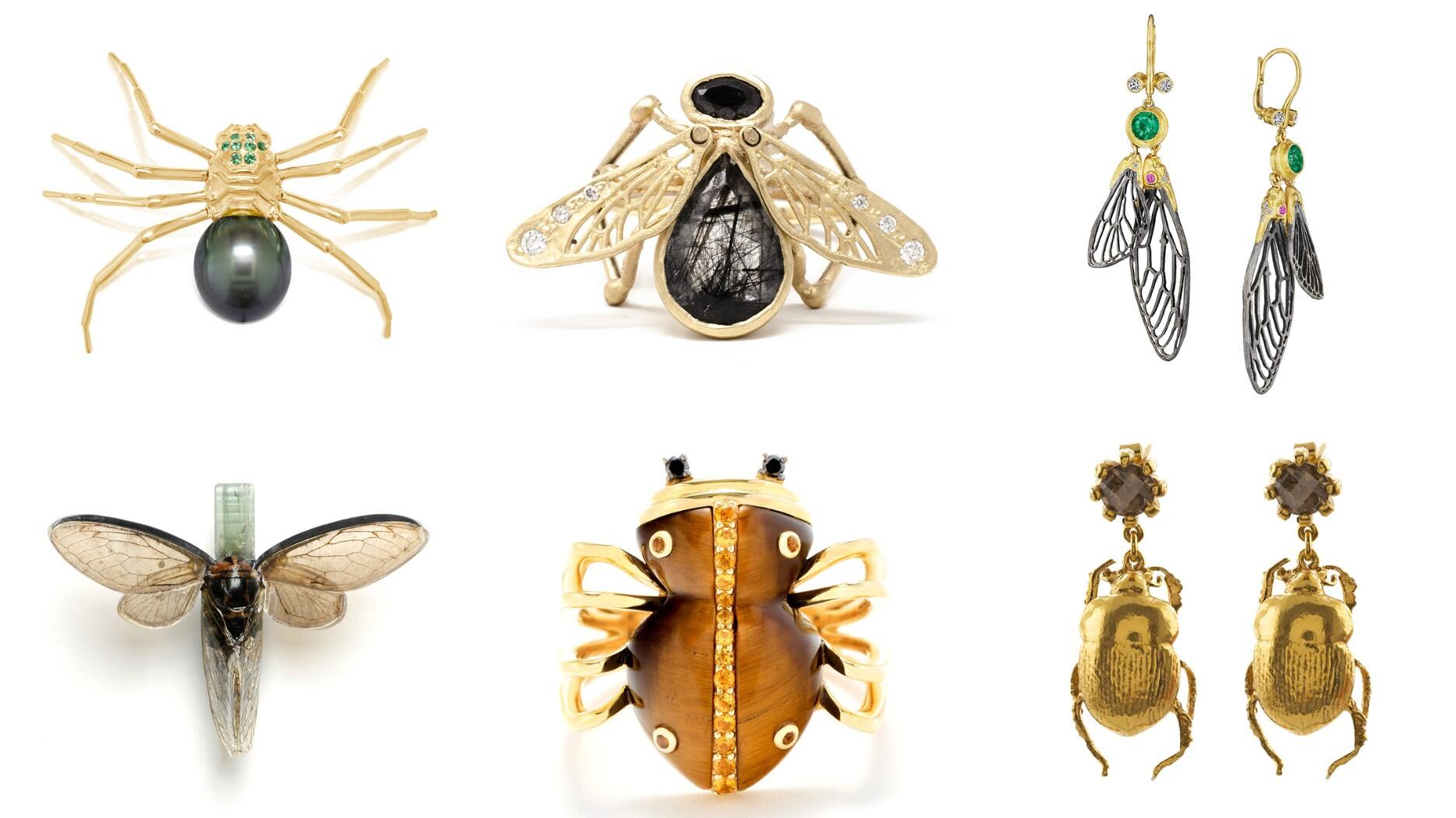Set in a Tiffany & Co. necklace, it sold for $4.2 million, the highest price and price per carat paid for a Paraíba tourmaline at auction.
Precious and imperial topaz from Brazil
Brazil produces more topaz than any other country in the world. Most of the production is colorless, which is irradiated and heated into various shades of blue. Precious and imperial topaz offer a rare and warmer alternative to the cool blue shades we are accustomed to seeing in jewelry stores. “Precious” topaz usually refers to yellow to orange colors while “imperial” topaz usually refers to pinkish-orange to pink to purple and even red colors (see figs. 1 and 6). However, some dealers argue that all topaz in these warmer hues should be classified as imperial. Since the origin of the word topaz is most likely from the Sanskrit word “tapas,” meaning fire, this argument seems to have merit. Recent price increases are due to limited mining, renewed interest from designers in these warmer hues and strong domestic demand in Brazil.
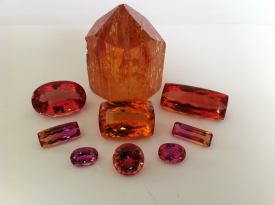
Fig.1: Precious and imperial topaz from Ouro Prêto, Brazil (Gems from 5 carats to more than 62 carats)
Center: Classic orthorhombic crystal with prismatic termination (102g). Photo: E. Boehm, RareSource
No visit to Brazil would be complete without stopping by the famous gold mining region of Ouro Prêto, “Black Gold” in reference to the black rock in which gold was first discovered there during the Brazilian gold rush of the early 18th century. Today, this beautifully preserved colonial Portuguese city is a UNESCO World Heritage Site and the world’s only source for imperial topaz.
Ouro Prêto, while built on gold mining, is today more famous for precious and imperial topaz, which was also discovered here in the early 1700s. The topaz mines are located just a short drive outside the city so it is possible to visit them in a few days. Getting there is easier if one flies through the closest major airport in Belo Horizonte, which is only a two- to three-hour drive from Ouro Prêto.
The two main large-scale mines of Capão and Vermelhão produce the majority of all material on the market today but there are also several small-scale mines operated by independent artisanal miners known as Garimpeiros. Vermelhão is the Portuguese word for vermilion in reference to the reddish-orange to red topaz crystals found there. All the mines are open-pit operations that use water to separate the gem crystals from the weathered host rock.


Fig.2: Washing grate (top left) used for the initial separation of host rock and gem-bearing ore, which flows down the slope to the rolling jig that further separates the gems from the ore. Capão Imperial Topaz Mine, Brazil.
Photo: E. Boehm, RareSource
Fig.3: Fine topaz crystals (top right) displaying the orange to sherry range of color found at the Capão mine in Ouro Prêto, Brazil. Photo: E. Boehm, RareSource

Geology
Topaz is an alumina-silicate that typically forms in granitic pegmatites or rhyolitic igneous rocks. Imagine a molten volcanic material that travels from the lithosphere deep in the earth through the asthenosphere and ultimately into the Earth’s crust. This molten material either migrates up as a large plutonic mass, or squeezes into weaker fractured areas within the earth’s crust creating pegmatites, or explodes out in the form of a volcanic rhyolite. Once it
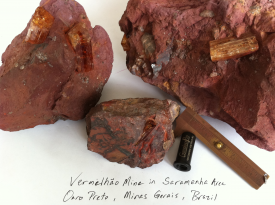
Fig.5: Topaz crystals in host rock from the Vermelhão Mine in the Saramenha district of Ouro Prêto within the state of Minas Gerais, Brazil. Photo: E. Boehm, RareSource
Gemology
The basic chemical formula for topaz is Al2(SiO4)(F,OH)2. Precious and imperial topaz gets its colors from trace amounts of chromium (Cr+3). It has a relatively high hardness of eight on the Mohs scale, which is the same as spinel. Like diamond, it has one direction of perfect cleavage so care must be taken to avoid hard blows. Its relatively high refractive index (1.61-1.63) and excellent transparency make topaz one of the most versatile and desirable gems. Like tanzanite and chrysoberyl, topaz is no-axial which means it has two optic axes and three optical directions through which light travels at different speeds. These three optical directions represent the three refraction indices of topaz. This also means that each direction has a different absorption producing different colors. Blending these colors in the faceting process is a true art and can produce amazingly varied results, particularly in precious and imperial topaz. Topaz typically contains two-phase inclusions (liquid and gas), three-phase inclusions (crystal, liquid and gas), or multi-phase inclusions (crystals, liquids and gas). These multi-phase inclusions are a result of the hydrothermal phase during which crystal growth occurs.
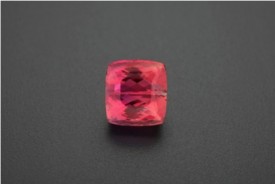
Graduate Gemologist (G.G.) Edward Boehm is the owner of RareSource (formerly JOEB Enterprises), a Chattanooga, Tenn.-based gemstone supply and consultancy. RareSource travels to mines worldwide to bring customers the finest quality gemstones. Contact him at edward@raresource.com. For those attending the Tucson show next month, please feel free to drop by the RareSource booth #406 at the AGTA show.
The Latest

The jeweler’s “Deep Freeze” display showcases its iconic jewelry designs frozen in a vintage icebox.
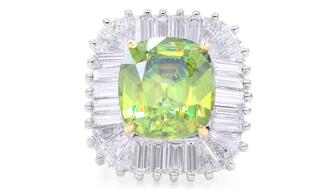
Take luxury gifting to new heights this holiday season with the jeweler’s showstopping 12-carat sphene ring.

How Jewelers of America’s 20 Under 40 are leading to ensure a brighter future for the jewelry industry.

This year's theme is “Unveiling the Depths of the Ocean.”


In its annual report, Pinterest noted an increase in searches for brooches, heirloom jewelry, and ‘80s luxury.

Starting Jan. 1, customers can request the service for opal, peridot, and demantoid garnet.

Roseco’s 704-page catalog showcases new lab-grown diamonds, findings, tools & more—available in print or interactive digital editions.

The 111-year-old retailer celebrated the opening of its new location in Salem, New Hampshire, which is its third store in the state.

The new catalog features its most popular chains as well as new styles.

The filmmaker’s personal F.P. Journe “FFC” prototype was the star of Phillips’ recent record-setting watch auction in New York.

The new location in the Design District pays homage to Miami’s Art Deco heritage and its connection to the ocean.

Inflations, tariffs, and politics—including the government shutdown—were among consumers’ top concerns last month.

“Longtime favorite” presenters, as well as first-time speakers, will lead talks and workshops at the annual event in Tucson next year.
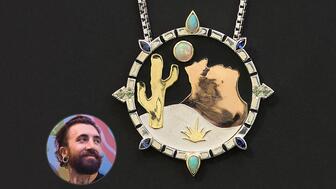
Silas Smith of Meridian Metalworks won the challenge with his pendant that blends Australian and American landscapes.
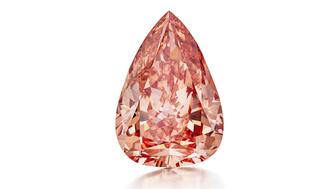
The sale of the 31.68-carat, sunset-hued stone was part of Sotheby’s first series of events and auctions in Abu Dhabi.

Most customers who walk into your store this month have made up their minds. Your job is to validate their choice, Emmanuel Raheb writes.

The collection features characters and motifs from Ukrainian folklore, including an enchanted mirror and a magic egg.

MatrixGold 3.11, the newest version of the jewelry design program, offers more flexibility, precision, and creative control.

The pavilion will be part of the 2026 JA New York Spring show, scheduled for March 15 to 17.

Kadet, a 1994 National Jeweler Retailer Hall of Fame inductee, helped grow the family-owned retailer in the Chicago area and beyond.

Billed as the world’s smallest wearable, Lumia Health’s new smart earrings have a health tracker subtly embedded in the back.
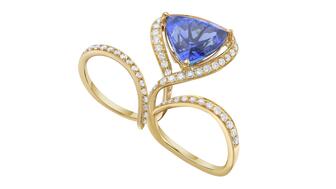
Don’t let those with December birthdays feel blue. Help them celebrate their month with blue zircon, turquoise, and tanzanite.

The new pink sapphire version of the piece dances with its wearer in the brand’s “Icons After Dark” holiday campaign.

A choice that’s generated a lot of commentary, Pantone says “Cloud Dancer” marks a fresh start and encourages relaxation and creativity.
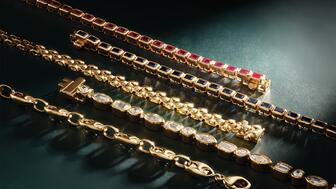
The manufacturer’s holiday campaign features a gift guide filled with trending designs and jewelry that can be personalized.

The man was charged with theft, accused of ingesting the necklace while in a jewelry store in Auckland, New Zealand.












